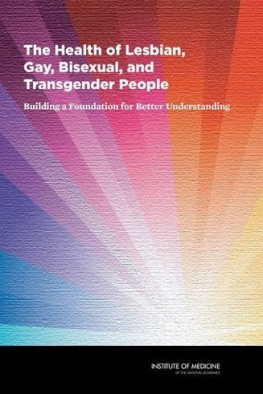
LESBIAN and GAY FOSTER CARE and ADOPTION
Second Edition
STEPHEN HICKS and
JANET McDERMOTT

Jessica Kingsley Publishers
London and Philadelphia

Contents
Nita and Clare are a lesbian couple who adopted three Asian girls in separate adoptions. They reflect on the barriers they faced to building their family and how the family has changed and evolved.
Paul and Richard, a gay couple, talk about some of the struggles facing gay adopters in earlier times. They tell the story of fostering and then adopting their son, Patrick.
Lee, a trans man, tells the story of how he fostered over 50 children over the years, and adopted five. His story reflects upon his time as a lesbian foster carer and adopter, before gender transition.
Elizabeth and Mary, a lesbian couple, talk about offering respite care to a disabled boy, Peter, and how they went on to foster another child, Daniel, on a long-term basis. They reflect upon the plans for them to adopt Daniel and why this never happened.
Kath talks about the separate adoptions of her three daughters, their life as a family and her current relationships with her daughters and grandchildren.
Jamie and Simon, a gay couple, talk about fostering for an independent agency and reflect upon offering a home to various children and young people. In their late 20s, they are among the youngest contributors to this book.
Dylan, a single gay trans man, talks about his journey to adopting his young son, Joshua, and their life together as a family.
Dilip and James are a gay couple who have adopted three Asian mixed race brothers. They talk about their adoption application, their initial match with two siblings and the surprise of being asked to adopt a third.
Barbara and Shazia, a black lesbian couple, were approved to foster by an independent agency after being refused by their local authority. They talk about their experience of fostering a severely disabled child for five years.
Mike and Andrew, a gay couple, talk about adopting their son, Jack, and their busy and rewarding life with him.
Teresa and Cath, a mixed race lesbian couple, talk about their journey to adopting a mixed race brother and sister and their life as a family.
Rob, a single gay man, talks about his experiences of fostering and the challenges that face the young people in his care.
Darrell and David, a gay couple, talk about becoming adoptive parents and their life as a gay couple bringing up their son in a small village community.

INTRODUCTION
Thirty years ago, a handful of lesbian and gay foster and adoptive parents in London were interviewed about their experiences of being assessed and, in a few cases, of having children placed with them. The resulting report, Fostering and Adoption by Lesbians and Gay Men (Skeates and Jabri 1988), was the first British publication to address this area of family life and social work practice. Ten years later, the network set up by those first carers in London, the Lesbian and Gay Foster and Adoptive Parents Network (LAGFAPN), had expanded to include around 50 lesbian and gay foster and adoptive parents across the country and included a second network base in the North of England, the Northern Support Group. In 1997, the London and Northern networks embarked on a joint project to publish their members stories in a book for prospective lesbian and gay applicants and fostering and adoption professionals. We published that book in 1999 under the title Lesbian and Gay Fostering and Adoption: Extraordinary Yet Ordinary (Hicks and McDermott 1999). It documented the journeys of 17 households, comprising 27 adults bringing up 40 children. In our Introduction to the book we optimistically compared the picture our stories painted to the 1988 study by Skeates and Jabri, noting that, Ten years on, the lesbian and gay community has far more experience of people who have actually been approved to foster and adopt children, and are doing so (Hicks and McDermott 1999, p.11). Those families represented progress unimaginable to the original 13 contributors in the 1988 study, some of whom never had children placed with them even after being approved by a local authority. But the numbers in 1999 still represented a tiny percentage of adoption and fostering placements in the UK (New Family Social 2015).
In contrast to the above picture, figures released by the Department for Education (DfE) in September 2016 showed that in the year 201516 there had been 450 adoptions by same-sex couples in England, accounting for almost one in ten (9.6%) of the total number. This included 20 adoptions by same-sex couples in Wales, with the figures for Scotland, though not released at the time, expected to be similar (New Family Social 2015). This figure did not include the dozens more adoptions by single lesbian, gay, bisexual and transgender (LGBT) adopters. It is clear that, in the two decades since we compiled our first book, there has been a sea change in social attitudes and professional practice towards assessing lesbian and gay applicants, placing children with them, and perceiving the LGBT community as a source of prospective carers for looked-after children. In addition, since both earlier publications there have been major changes in legislation relating to child protection, fostering, adoption and the human rights of LGBT people. New spaces are emerging in which those who refuse identification with binary categories of male and female are able to express themselves and assert a range of non-binary, gender non-conforming and genderqueer identities (Green and Peterson 2003), but this increasing openness to different sexualities and fluid definitions of gender is unfortunately still being matched by homophobic responses, particularly in relation to having children and parenting (Weeks, Heaphy and Donovan 2001).
The Skeates and Jabri (1988) publication and the first edition of our book were written in a climate of isolation and adversity, in the face of institutionally sanctioned homophobia. In the same year as the Skeates and Jabri study was published, Section 28 of the Local Government Act 1988 was enacted in England, Wales and Scotland, stating that local authorities should not intentionally promote homosexuality or publish material with the intention of promoting homosexuality or promote the teaching in any maintained school of the acceptability of homosexuality as a pretended family relationship. Although no prosecutions were ever brought under this legislation, its suggestion of pretended versus real family relationships chimed with established norms around gender, family and the sanctity of marriage, then only legal between a man and a woman. Inequality in the age of sexual consent for gay men was still enshrined in law, while lesbian and gay relationships had limited recognition in society. By 1999, there was legislation in place on sex discrimination, equal pay, race relations and disability discrimination, and public bodies were being encouraged to embrace equal opportunities policies. However, the presence of Section 28 on the statute books inhibited many from extending their equalities practice to protecting lesbians and gay men from discrimination. Nevertheless, there was active and concerted opposition to Section 28 from lesbian and gay activists and their supporters and some opposition within statutory bodies. Some fostering and adoption agencies actively pursued inclusive recruitment policies indicating their openness to black, working-class, single and lesbian and gay applicants. The majority, however, operated risk-averse professional cultures, and some subscribed to the belief that only married couples or, in circumstances of extreme necessity, single heterosexual carers, could meet the needs of children.
Next page
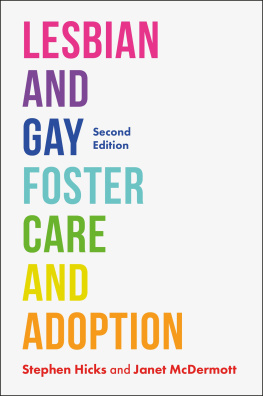

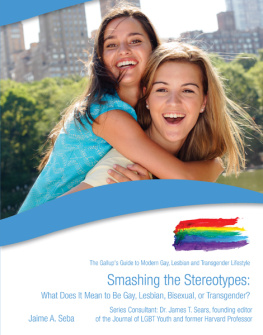
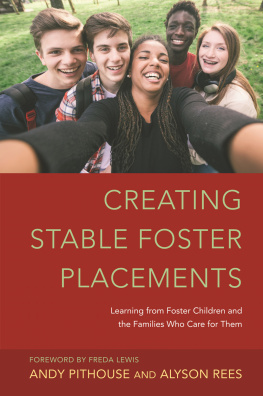
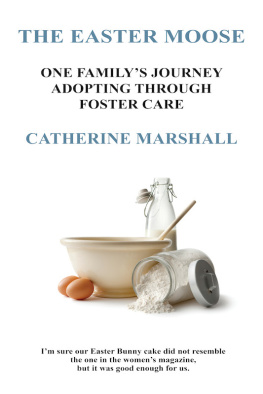
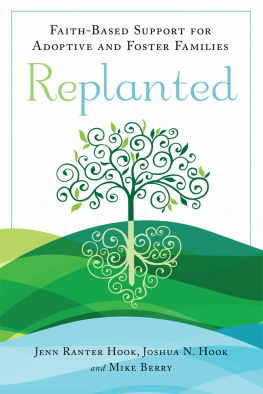
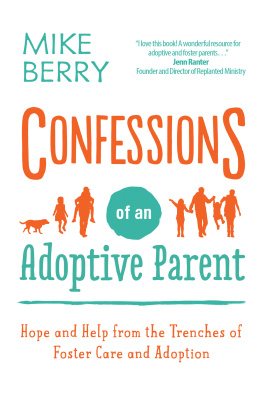
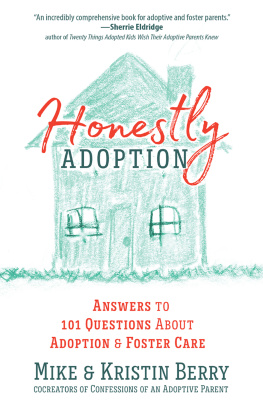
![Chuck Stewart - Lesbian, Gay, Bisexual, and Transgender Americans at Risk [3 Volumes]: Problems and Solutions](/uploads/posts/book/129596/thumbs/chuck-stewart-lesbian-gay-bisexual-and.jpg)
